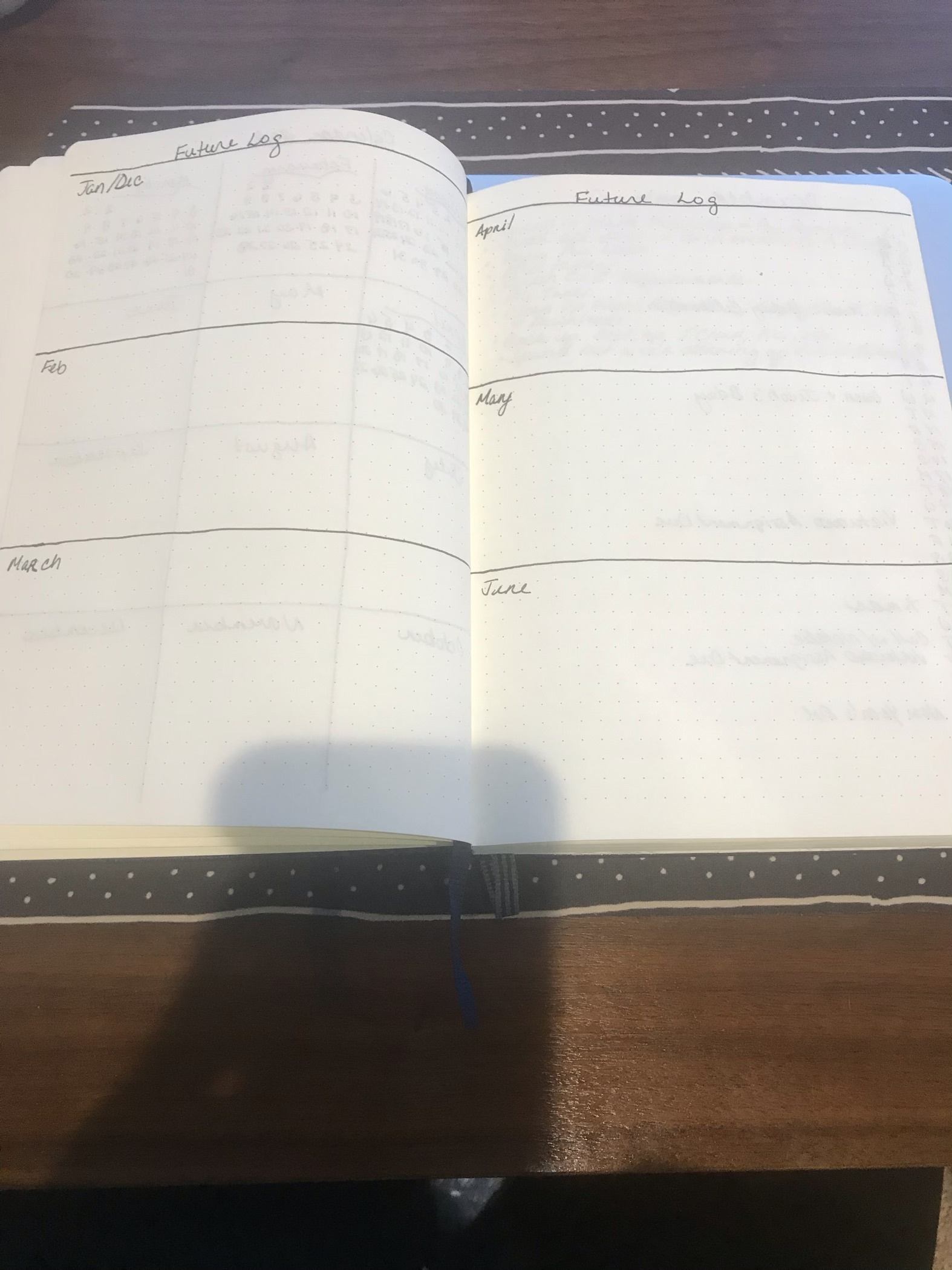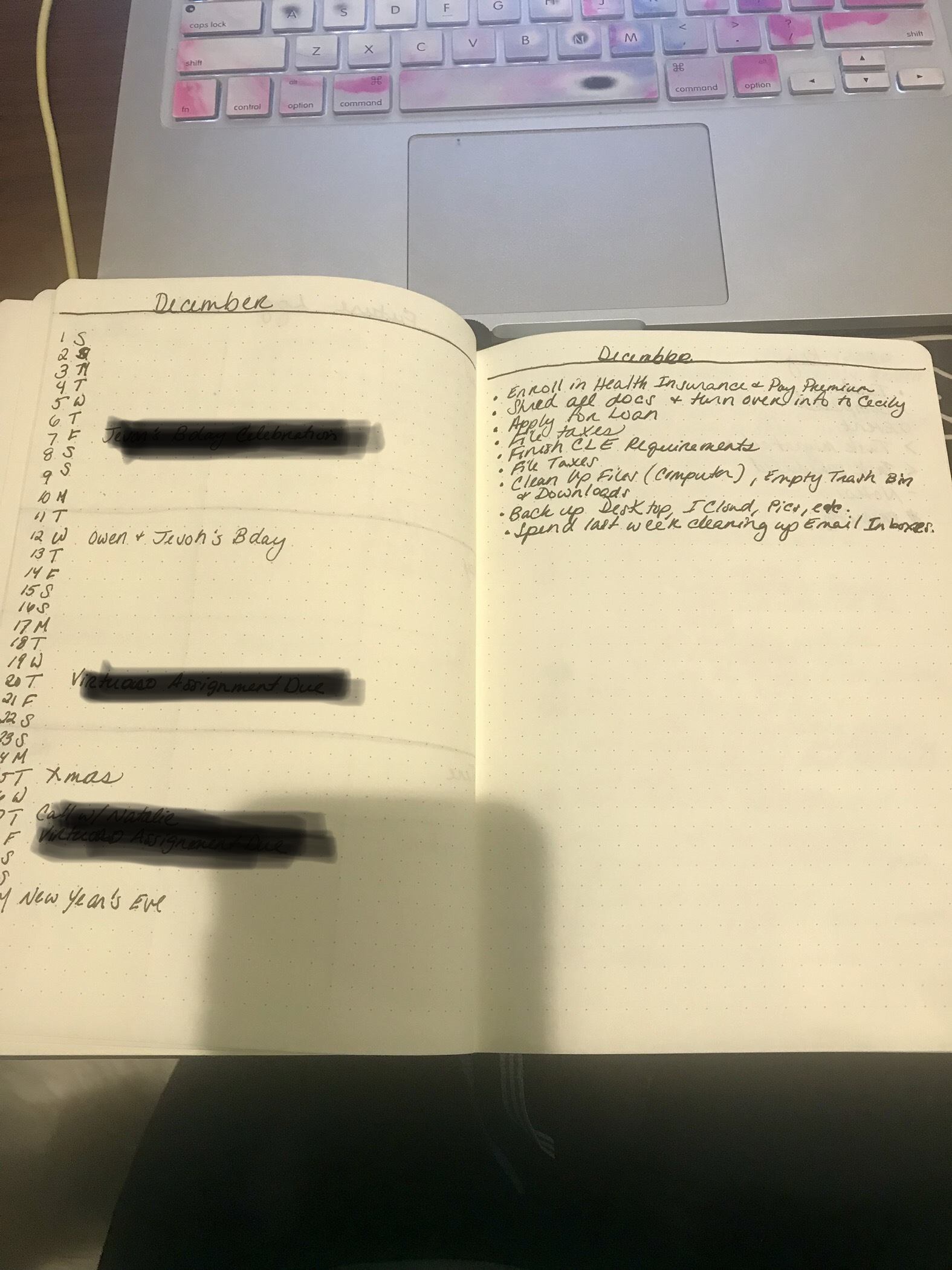A Lawyer’s Guide To Bullet Journaling For Greater Productivity

I’m at the point in my life where I have to write everything down to remember it, and I mean everything. I could say that aging caused this need, but if I’m honest, I probably should have been writing things down a long time ago.
Scientifically speaking, there are many benefits to writing beyond recording information. When we write things down, encoding occurs. Encoding is a biological process by which the things we perceive are analyzed in our brain’s hippocampus. The act of writing by hand improves the encoding process in such a way that we have a much better chance of remembering and understanding the information we write down.
As legal professionals, we have lots of things to remember and write down all the time. For me, that meant that I used to write things everywhere. I had a notepad by the phone for notes from phone calls. I kept my to-do list in a separate planner, and any random ideas went on the notes app on my phone, on the back of an envelope, or on any other scrap paper I had lying around.
As you can imagine that system didn’t really help me remember things because I first had to remember where I wrote the note down in the first place. I wanted something that allowed me to keep everything in one place; that would help me to stop wasting time looking for that one envelope with the phone number I wrote on it a week ago; and that was organized. Then I found bullet journaling and haven’t looked back.
What Is Bullet Journaling?
Bullet journaling is a system to store your to-do lists, calendar, planner, and general journal of ideas (because I use it for that too) all in one place in an organized way. Of course, as attorneys, you’ll still need separate client files as a repository for case and client specific info. However for everything else, you can use a bullet journal.
The best part of a bullet journal is that all you need is a notebook and a pen to get started. You don’t need a particular kind of notebook or a specially designed Mont Blanc pen. Any notebook and pen will work. So it’s cheap and easy to get started.
Here are the main components of the system:
Index
The magic of bullet journaling happens right at the beginning of your notebook. You create a table of contents using the first few pages. As you fill your journal, you number the pages. Then you update the index with the subject titles and page numbers from the journal like “December Monthly Calendar – pg 20.” All of your major headings like your future log, monthly logs, and collections (discussed below) get added by name and page number to your index. By doing this, you always know where to find what you need in the journal.
Future Log
The future log is a 6-month to 1-year calendar that you can add right after the index to give you an overview of your year. Here’s the one I created this week.

Monthly log
The monthly log is a monthly calendar along with your monthly to-do list. You use the monthly to-do list to migrate tasks that didn’t get done last month to the next month. You also add new tasks as they come up. Here is a picture of my log from December.

Daily Log
The daily log includes your daily to-do list and the other notes, phone numbers, and general ideas that you jot down everyday. You create a new log each day by writing the day and the date as a heading on the next empty line or page in your notebook, whatever works for you. The heading looks something like this, “12/25 Tues” or “25 T.” After you write the heading, you add your to-do list and notes under it.
Rapid Logging
Because bullet journaling is meant to be quick and easy, you use a series of symbols written alongside your notes and to-do list as a short-handed way to categorize them. The key looks like this:
● = Task/To-do item
X = a completed task
> = Task migrated (aka moved) to next day or next month
< = Task scheduled
* = Priority
– = Notes
How Bullet Journaling Works
There are plenty of videos online showing you how to make your bullet journal fancy and well-designed using washi tape, stickers, and hand lettering, but I don’t make time for all of that. Bullet journaling for me isn’t my go-to creative habit. It is a productivity tool that works.
For my notebook, I use the Leuchtturm1917 dotted notebook because the pages are already numbered, the index has been pre-created, and I like the freedom of dots instead of lines. Using rapid logging to keep my to-do and notes short, I list my top 3-5 task to complete that day under the heading for that day’s daily log. Then any notes, ideas, or reminders go under my to-do list.
At the end of the day, I review what I have completed and what needs to be migrated or added to tomorrow’s to-do list. Then I create my to-do list of 3-5 tasks for the next day using what I’ve learned from that review.
Every so often, I stop to create “collections” in my journal too. A collection is when you gather all of your notes about a topic on one page with a heading. Then you add that heading with the page number to the index. An example of this would be blog post ideas. I randomly write down ideas for posts in my daily logs, but at some point, I will pull all those random ideas into a collection titled “Blog Post Ideas” that I can refer back to later.
In addition to logging and task management, people use bullet journals for all sort of things including tracking weekly or daily habits, financial goals, and rituals. I like to add space for important phone numbers, motion calendar days, and references to particular cases or statutes that I use routinely. While I know most of these items can be found in the Lawyer’s Diary, my bullet journal fits in my purse and is much easier to carry around than that will ever be.
Now that you know the basics, check out the official bullet journal page for more info, and let me know what you think about bullet journal or your favorite go-to organizational tools in the comments.
